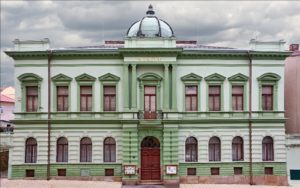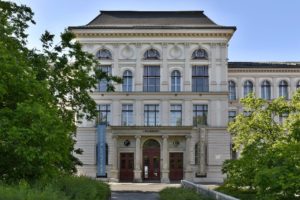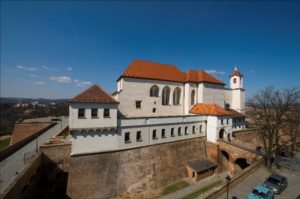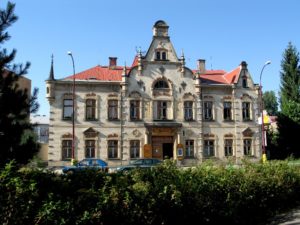Municipal museums
The City of Prague Museum
Na Poříčí 1554/52, 186 00 Praha 8
www.muzeumprahy.cz
The City of Prague Museum conserves and presents Prague’s history from the earliest times to the present. The Museum administrates a range of monuments including Prague’s spires. It cares for tradition of urban crafts in Ctěnice Château’s exposition, or unique examples of modern architecture, such as František Müller’s villa (Villa Müller) designed by Adolf Loos (1928-1930), or the house of Otto Rothmayer (Villa Rothmayer), descendant of Josip Plečnik, the architect who designed Prague Castle renovation.
On-line collections: sbirky.muzeumprahy.cz, exhibitions: Od nitě ke košili (From Thread to Shirt)

Centre for Architecture and Metropolitan Planning
Vyšehradská 51, 128 00 Praha
praha.camp
CAMP, the Center for Architecture and Metropolitan Planning, has set a goal to improve public discussion about the development of Prague. CAMP is located in the building of the Prague Institute for Planning and Development and offers visitors a 200 m2 exhibition hall with a unique, large projection screen, a library, a café and a modern lecture hall.

Břeclav Munucipal Museum and Gallery
Dukelských hrdinů 2747/4, 690 02 Břeclav
www.muzeumbv.cz
The history of museums in Břeclav goes back to 1928, the year when the Museum and Local History and Geography Society was established. The current institution was founded in 1995 and shows the most important moments from the history and art in the region. The permanent exhibitions are devoted to the history of the House of Liechtenstein, Judaism in Břeclav and Slavic archeology and are on the exhibition entitled ‘Great Moravian Pohansko’ (fortified settlement).

Čáslav Municipal museum and library
Husova 291, 286 01 Čáslav
www.cmuz.cz
The Municipal Museum in Čáslav is among the oldest regional museums in Bohemia. It is housed in a Neo-Renaissance building built in 1884 right for the museum purposes. Extensive natural history collections of patron Josef Kaunický and collections amassed by the Museum and Archaeological Association ‘Včela Čáslavská’ were moved there. These collections have been preserved in the Museum until today and document the manner of museum work and presentation of collections in the 19th century. In 2018, the exhibition’s movables were inscribed on the list of the cultural monuments in the Czech Republic.

Municipal Museum of Ústí nad Labem
Masarykova 1000/3, 400 01 Ústí nad Labem
www.muzeumusti.cz
The Museum was established in 1876. Its collections document the culture, history, and nature of the city of Ústí nad Labem and northwestern Bohemia. It is also dedicated to the history of the German-speaking population in the Czech lands and cares for a unique medieval city execution site, which is one of the best-preserved monuments of its kind in the Czech Republic.

Town Museum and Gallery Svitavy
Máchova alej 293/1, 568 02 Svitavy
www.muzeum.svitavy.cz
The history, arts, and crafts of the Hřebečsko region are the main topics reflected in the collections of the Town Museum and Gallery in Svitavy. There is a special focus on the tradition of nativity scene craftsmanship, as well as on the history of washing technology. The local collection of washing technology features 192 examples of washing machines and 52 washboards – the largest collection of its kind within the Czech Republic!
Another part of the exhibition is focused on the life and work of Oscar Schindler, who was local to Svitavy. A wide variety of educational programs and free time activities is offered not only to schools, but to anyone interested.
The main priority of the museum has recently become the restoration of the 15-meter-long nativity scene from Svitavy, which contains mechanical moving figures. The importance of this unique example of folk craftsmanship extends way beyond the Svitavy region.
The City of Brno Museum
Špilberk 210/1, 662 24 Brno
www.spilberk.cz
Established in 1904, the Museum is in charge of the cultural heritage of the city. Its rapid development would occur after 1960 when the institution moved into Špilberk Castle, the landmark notorious as the ‘dungeon of nations’, where, e.g. Italian poet Silvio Pellico had been imprisoned. In addition to history the Museum’s expositions cover the artistic and urban development, especially the unique inter-war era, when Brno occupied a dominant position in the development of modern architecture. What serves as an excellent illustration is the Tugendhat Villa designed by Architect Ludwig Mies van der Rohe and built between 1929 and 1930. It has been inscribed on the UNESCO’s World Heritage List since 2007.

